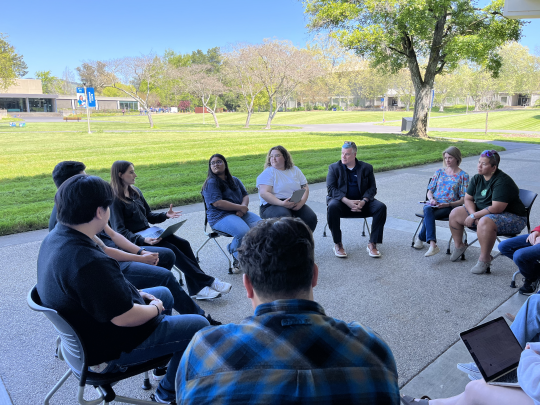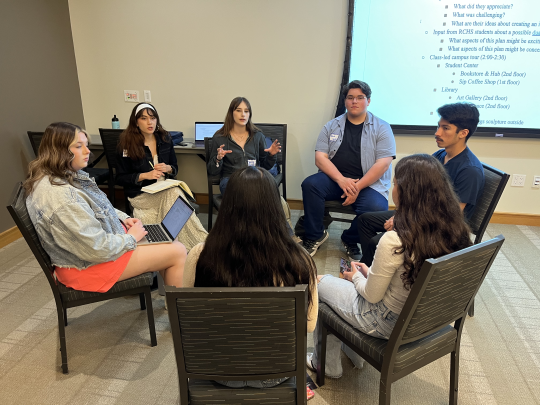College Conversations Project Bridges SSU and RCHS Students through Service-Learning
Written by Gillian Estes
This spring, students at Sonoma State University had the opportunity to step outside the classroom and into meaningful dialogue with local high school students as part of the College Conversations Project, a service-learning collaboration between SSU and Rancho Cotate High School (RCHS).
Organized and implemented by Professor Sarah Rapp through her School & Society course, the project aimed to explore high school students' perceptions of college while increasing their access to higher education. Dr. Rapp worked in close partnership with RCHS Leadership teachers Jessica Holman and Kasia Munski to design and implement the project.
Throughout the semester, SSU students visited Rancho Cotate High School on three separate occasions. There, they engaged in conversations with leadership students, sharing their diverse journeys to college and answering questions about university life. In return, the RCHS students offered candid insights into their post-high school aspirations and how they perceive higher education, including Sonoma State specifically.

Following the visits, SSU students compiled what they learned and shared their reflections with Ed Mills, SSU’s Vice President for Strategic Enrollment, and Anabel Zamudio, RCHS’s College & Career Counselor. The insights gathered will help inform future outreach and student support strategies.

As the final step in the project, SSU students connected their experiences with course content in their culminating papers, linking academic theory with the real-world impact of educational access. By fostering genuine, reciprocal dialogue between college and high school students, projects like these illustrate the power of service-learning to educate, inspire, and build community.
Reflecting on the project, Professor Sarah Rapp said, “My favorite part of this project was the way in which it empowered both groups of students. The high school students were the experts providing us with their insights and experiences. SSU students were researchers exploring how to improve education and access.”



